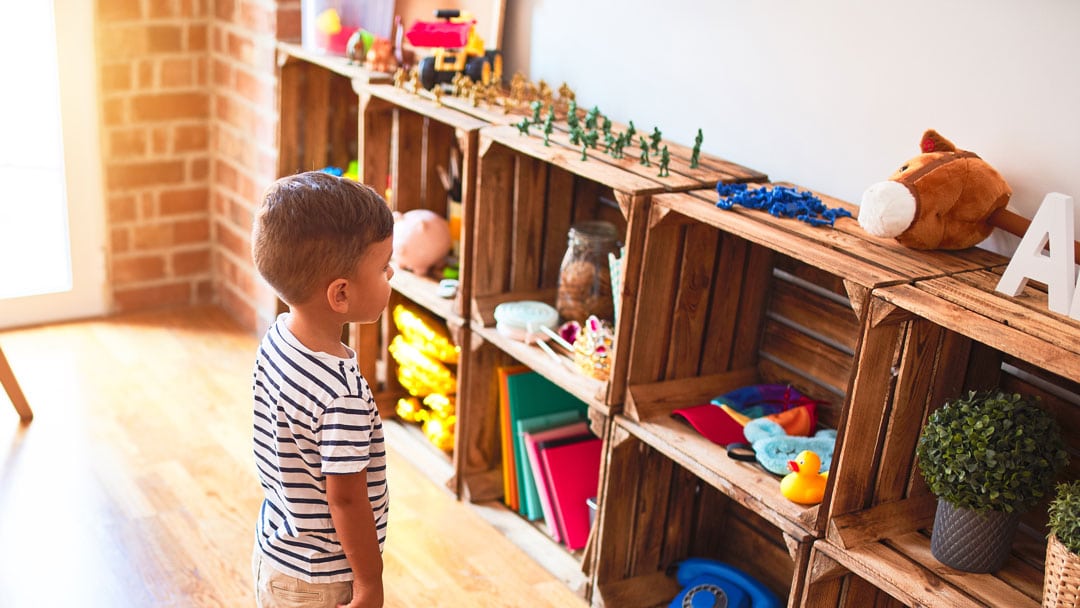When you have a little one, it can feel like toys are everywhere, overflowing from bins, spilling out of shelves, and taking over every room in the house! But what if we tell you there was a way to manage the mess? Introducing toy rotation—a simple method to reduce mess, keep playtime fresh, and help your child focus better. Here is all you need to know about toy rotation and how it can change your home.
What is toy rotation?
Toy rotation is when you regularly cycle through your child’s toys, rather than leaving them all accessible at once. Instead of having all the toys out, select a few sets and store the rest away. After a few weeks, swap the current toys with the ones in storage. The result? A tidy space and toys that feel new and exciting each time they’re introduced.
Tips to start a toy rotation
Starting toy rotation in your home is easy! Here are a few easy steps to help you get started.
1. Declutter and sort toys
Go through all the toys and separate them into a few categories (e.g., puzzles, building blocks, dolls, cars). This will help you see how many toys you have in each category making it easier to rotate.
2. Choose a storage solution
The toys you’re rotating will need their own space. The best way to store them is to use bins, baskets, or storage drawers to keep them organized. Ensure the storage solution is easily accessible so you can swap toys in and out as needed.

IFAM Elephant Storage Organizer
![IFAM: Design Storage Rack & Bookshelf [2 Large 4 Small Baskets] (Beige)](https://www.babydash.com.my/media/catalog/product/cache/c653860525fda322a0c20e8d0e4a4017/i/f/ifam_design_storage_rack_bookshelf_2_large_4_small_baskets_beige_-_1.jpg)
IFAM Design Storage Rack & Bookshelf
3. Pick a rotation schedule
You may rotate toys weekly, bi-weekly, or monthly — whatever suits your family best. What is important is to keep the rotation consistent so your child does not get bored playing with the toys that are out.
4. Limit the number of toys available at once
When choosing toys for the rotation, aim to keep the selection manageable. You might want to start with 4-6 toys at a time, depending on the size of your play area and your child’s age. But, a smaller selection will keep things neat and not overwhelm your child.
5. Observe and adopt
After a few rotations, pay attention to the toys your child seems most interested in and the ones they rarely touch. This can help you refine the toy collection and focus on the toys that foster creativity and engagement.
By rotating toys regularly, you can create a more organized and intentional play environment that benefits you and your child. Less mess, more fun! Give toy rotation a try in your home, and watch how it elevates your child’s playtime (and your space) for the better.
















